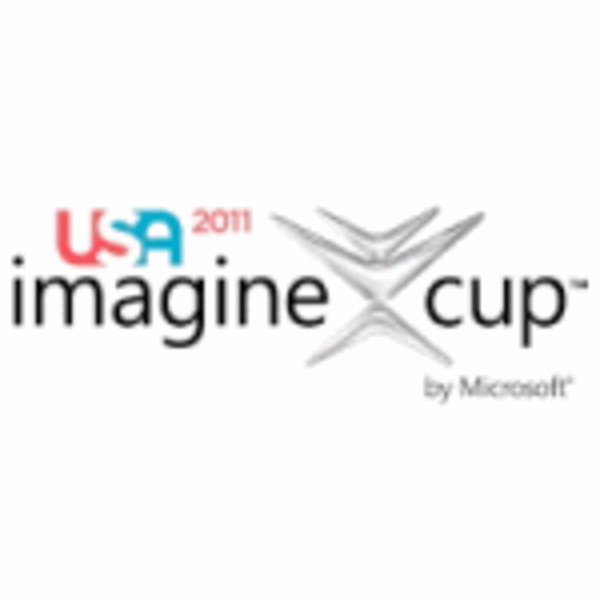This is the ninth year for the Imagine Cup, Microsoft’s student technology competition. Teams from all over the world, representing 70 countries, have gathered this week in New York City for the Imagine Cup finals. It’s down to the final round today with those making it to the very last round of the finals presenting the projects they’ve designed and built.

These projects do not simply highlight new technologies or innovative applications. As part of the Imagine Cup mandate, the students’ projects must tackle some of the world’s most pressing issues, as outlined by the United Nations’ Millennium Goals. These include combating disease, ending hunger and reducing childhood mortality, to name a few.
I’ve spent the day watching the finalists’ presentations, and I’m impressed by their ideas and implementations – not to mention their ability to pitch and answer judges’ questions in what for many of them is a foreign language. The awards will be given out tomorrow evening, but here are some of my favorites from the day.
Team Dragon (U.S.)
Asthma is the most common chronic illness in children. While an asthma attack is a terribly traumatic experience for kids, routine asthma care — performing regular breathing tests — can feel like a chore. Not surprisingly, kids’ adherence rates to their asthma management routines are very low.

Enter Azmo the Dragon, a mobile role-playing game that makes these daily breathing tests fun. The game connects the mobile phone to a spirometer (the device that asthma sufferers breathe into to record their lung performance). Using the spirometer, kids control Azmo, a fire-breathing dragon. From having breathing be a source of trauma and disempowerment, Azmo the Dragon lets kids destroy villages and castles with their fiery breath.
The game itself is fun – there are several levels, and the dragon has other abilities besides simply breathing fire. All this makes daily test-taking seem like much less of a burden. But that’s just part of the genius of this game. Azmo the Dragon takes a baseline of user’s lung function, takes track of a patient’s daily data, and as such will make it easier to tell when an asthma attack may be impending (typically asthma sufferers experience several days of declining lung function beforehand). Through regular monitoring then, there’s a better chance for intervention.
The students who built the game attend Rice University, and at the Imagine Cup are showcasing not only their incredible game but also the spirometer hardware (developed at Rice) that is far cheaper than other apparatuses on the market. Typically these cost around $500, but the one used with Azmo the Dragon costs between $50 and $100 and is open source.
Team Note-Taker (U.S.)
Arizona State University student David Hayden is legally blind, and when he enrolled in math classes, found it incredibly difficult to keep up with note-taking in the classes, so much so that he had to drop the courses. So he set out to devise a tool to help visually-impaired students with note-taking as none of the products or services currently on the market, including legally mandated support personnel, really suffice. Hayden is one of the members of Team Note-Taker, the winner of the U.S. Imagine Cup finals.

Team Note-Taker has built a custom-designed pan/zoom camera and tablet PC that supports both pen and multi-touch input. This allows for the capture of video and audio, all connected to a student’s handwritten notes. The tool has a number of great features, including the ability to enhance the image (when an instructor’s dry-erase marker is about to run out, for example), to swipe the video back a few frames (so a student can see the whiteboard and continue taking notes, even if the instructor has stepped in front and blocked the view), to take screenshots of the whiteboard, and to search all of this offline. All the notes can be archived by class.
Studies have shown that students learn best when they take their own notes, and Note-Taker helps give visually impaired students the ability to do just that, easily moving between the distance-reading of the whiteboard at the front of the class and the close-reading of handwritten notes.
OneBuzz (New Zealand)
OneBuzz is tackling the problem of malaria, the single largest killer of children in the world. The disease is preventable and curable, and although over a billion dollars are spent on this, it’s clearly not enough, partly because of inefficiencies in the system. “The mosquito is winning,” said the team in their presentation today, saying they’re going to give “one giant ‘byte’ back for mankind.”

OneBuzz’s tool aggregates data from a variety of sources to help manage the supply chain for malaria medicine, not so that clinics can react to outbreaks but so they can respond in real time and – even better – actually predict them. This will ensure that the clinics have the medicine, people have the nets, and areas have the pesticides that they need.
The data comes from text-messaging from both individuals and clinics who can report patients, deaths, and medicine stockpiles. It also uses sensory and satellite data in order to track rainfall and the weather conditions that might lead to an outbreak. As malaria is seasonal and cyclical, the system utilizes data from past years and past weeks in order to ascertain which clinics and which communities will need help.
OneBuzz says it hopes to unite researchers and aid organizations. The team has made a strategic alliance with India’s Institute of Malaria Research, but it has also created a simple, open API so that others can build upon and extend the system.
Disclosure: Microsoft paid for my travel to the Imagine Cup.
Image credits: Team Dragon, Tom on Tech, Imagine Cup’s Flickr page





















